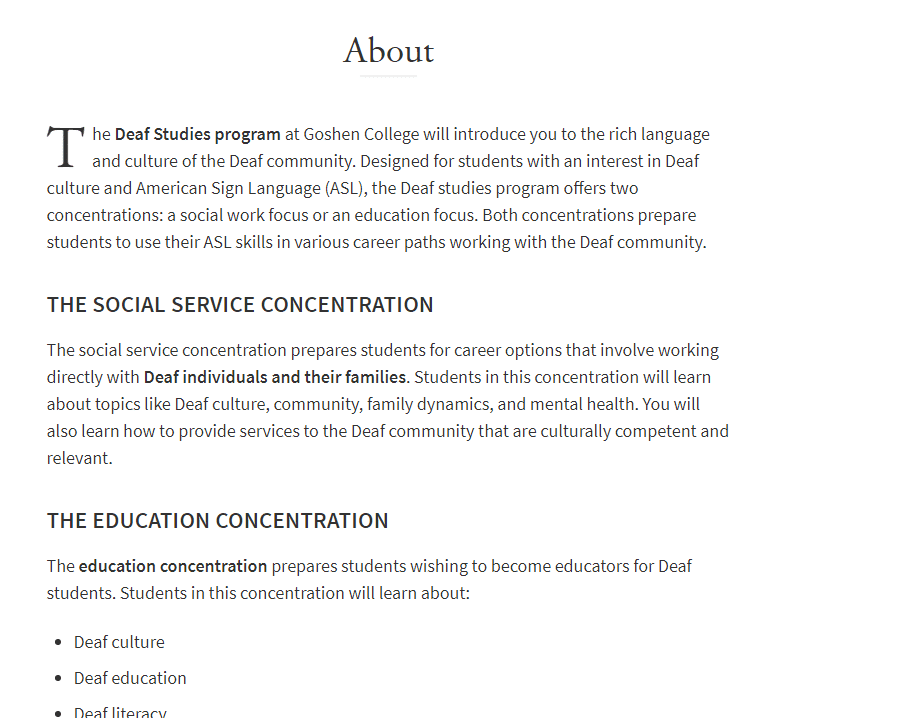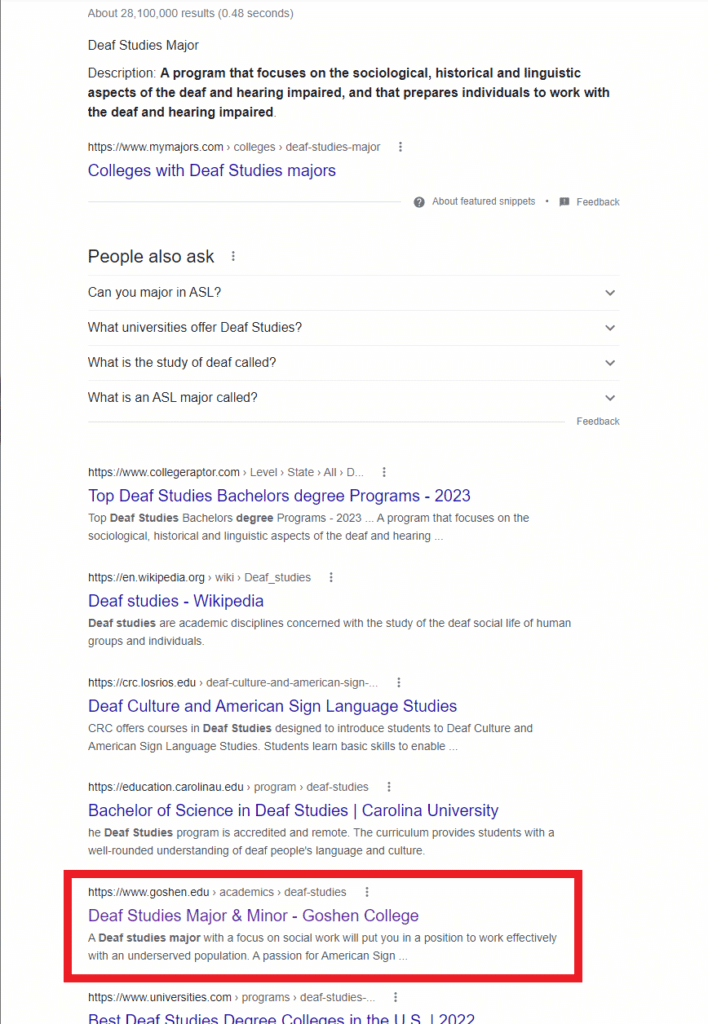Crisis Communication in Higher Ed: Pepperdine’s Wildfire Response
See how Pepperdine University redefined crisis communication in higher ed by prioritizing safety, faith, and storytelling during the California wildfires.
Inbound Marketing
Search engine optimization (SEO) has had a few shake-ups since I blogged about seven SEO basics for enrollment marketing in 2015.
I addressed significant SEO changes in 2020, citing trends in Google’s mysterious algorithm that rewarded or penalized specific strategies.
To the uninitiated, SEO can feel like the Wild West of digital marketing – it’s not a lawless frontier, but the rules can be vague.
I think it’s absolutely essential to understand the underlying principles behind optimizing your digital content to maximize its reach. I recommend reading this post if you’re brand new to the machinations behind SEO.
While some marketers might pursue paid (or “cost-per-click”) pushes to the top of a search engine results page (SERP), I’m a big advocate for organic returns.
With the proper insight and commitment, I believe you can elevate your school’s SEO without blowing your budget on expensive advertising fees.
Now, let’s dive into five things you should be aware of for your 2022 SEO enrollment marketing strategy!
One of the best (and perhaps easiest) SEO strategies for promoting organic traffic to your website is frequently posting new content.
This content could be anything from an article summarizing a football game to an announcement about a new academic partnership.
However, posts like these can be inconsistent or too short to be picked up by the Google Index, which will often earmark articles with fewer than 300 words as “thin content.”
If your school struggles to post rich content regularly, I highly recommend a blog strategy.
According to research by Public Advertising Agency, blogs with over 1,000 words have a much higher chance of appearing in searches.
Regarding frequency, HubSpot recommends that smaller businesses – or schools – blog one to four times a week to boost organic traffic. If you don’t have a dedicated writing team, I recommend posting one blog weekly.
Not only are blogs great for generating traffic, but they are an opportunity to generate cornerstone content. Cornerstone content speaks to the core of your school’s mission and values and gives readers a unique perspective of your institution.
A big problem I often see with school SEO strategies is a lack of quality for the sake of quantity. Give your readers fresh, engaging content first and foremost. Information dumps will not only stunt your SEO, but they will bore your intended audience.
Think of cornerstone content as planting your flag in the ground for your SEO strategy. It will speak to prospective students searching for their mission-fit school or university.
Keywords are still an essential piece of SEO in 2022.
Yet, I would like to harken back to my “quality versus quantity” argument when discussing relevant keywords.
While keywords are important for organic searches, you should incorporate them in a meaningful way that makes sense to your readers.
“Keyword stuffing” to grab the attention of a Google crawler will not only ruin your reader’s experience but will likely hurt your SEO more than help.
Google has become very good at recognizing what is known as “black hat SEO” – a practice that violates a search engine’s terms and conditions.
So, using too many keywords can penalize your website’s chances of appearing in a search!
Instead, focus on keyword placement over headcount.
We recently worked with Goshen College in Indiana to help bolster their website’s SEO. A major focus was keyword usage. Here’s an excerpt from their Deaf Studies page:

Take note of the emboldened words.
Your keywords should always populate in headings and the first sentence of each paragraph when possible.
Two of the above keyword phrases, “Deaf Studies program” and “Deaf individuals and their families,” are examples of long tail keywords. Long tail keywords typically contain three or more words and appear in more specific searches.
Now, if you search “deaf studies major,” rather than being buried behind walls of SERP, Goshen’s website is on the front page:

Remember, write for your target audience first. If your keyword usage doesn’t make sense to you after reading the final product, it won’t make sense to your readers.
A more difficult but effective way to maximize your SEO for enrollment marketing is referring backlinks.
Referring backlinks drive traffic to your site from third-party domains.
So, why are backlinks critical for SEO?
Backlinks are important because they establish credibility. The more backlinks to your site that exist in third-party domains, the more search engines will deem your site relevant.
If your school has partnered with outside organizations, talk to them about posting a backlink on their site. For example, smaller, faith-based schools could approach their supporting church denominations, archdiocese/spirituality groups, and synagogues about posting links to the school website and content.
Also, if you post content on a third-party site (like a blog on Medium, for example), be sure to have appropriate hyperlinks that will direct traffic to your school website.
I cannot stress this enough: never purchase links.
The thought of taking the easy way out and buying links in bulk may seem appealing. But you will risk the wrath of the Google Penguin.
No, that is not a joke.
If SEO is the Wild West of digital marketing, then Google Penguin is the sheriff. Added to Google’s search algorithm in 2016, Penguin applies negative value to links it deems suspect.
Instead, tap into resources you’ve acquired organically to increase your backlink representation. Social media accounts (including YouTube) are also great for boosting them!
Your first instinct might be to think, “Why are images and videos important for SEO? How can an algorithm even measure that?”
The truth is that features that used to be considered a bonus for SEO are becoming increasingly essential.
In my 2020 SEO update, I noted that 22 percent of all web searches were Google Image searches.
According to Moz, that number has jumped to 32 percent for image searches and 29 percent for videos as I’m writing this.
Therefore, I must amend a statement I made two years ago:
If you don’t have at least one optimized image for your content, you’ll be invisible in 1 out of every 3 searches.
An optimized image is a relevant (and properly licensed) graphic that should have a title containing your keyword(s) and alt text with keyword(s).
I understand that not every school has access to quality video resources. However, you should strive to use high-quality images for your content at the bare minimum.
If you’re interested in boosting your school’s SEO, you’re likely already familiar with Google Analytics.
However, you may not be aware that significant changes are coming to the platform in the coming year.
Google’s Universal Analytics (UA) has been the standard for gauging SEO effectiveness since 2012. As an application that tracks user data and measures web traffic, it has been an invaluable tool for digital marketers.
When Google announced the next evolution in measuring analytics, Google Analytics 4 (GA4), in 2019, people weren’t sure what that would mean for the future of UA and SEO.
That question was answered in March when Google stated they will be sunsetting UA soon after GA4 launches in July 2023.
So, how will that affect you as a higher ed marketer?
First, with the grand launch of GA4 comes the demise of third-party cookies in Google Chrome. “Cookies” are files that collect user information about their visit to a website that marketers may use to personalize that user’s experience.
In their bid to be more transparent about user data applications, Google is shifting from a session-based data model to an event-based data model.
Currently, marketers can use UA to see different types of “hits” from a user on their websites, such as page views, transactions, and social interactions.
However, in GA4, each of those hits will appear as a blanket “event” with no differentiation indicator.
You will no longer be able to see what specific majors a prospective student may have been perusing or how long a user dwelled on your latest blog. Instead, each of those hits will look exactly the same.
In short, determining user interactions on your school’s website will be more ambiguous with the launch of GA4, and you may have to adjust your SEO accordingly.
Also, GA4 is shifting away from the standard reports model prevalent in UA in favor of custom reports.
For example, many marketers find the “Source/Medium” report in UA convenient for analyzing traffic on their sites. Unfortunately, that feature and over 20 other reports will no longer be available by default in GA4.
Thankfully, resources exist to help you recreate your favorite reports from UA in GA4.
Some of these changes in Google Analytics may be a step in the right direction from an ethical point of view. But they will challenge marketers in judging the success of their SEO strategy.
Enrollment marketing SEO may seem like an insurmountable mountain of data and digital sleight of hand, but a few tweaks to your content can make a world of difference.
Check out these resources for more guidance with your enrollment marketing SEO strategy:
If you’d like a direct line to someone who can give you input on your school’s SEO strategy, give us a shout-out!
You’re in luck! We’ve curated 25 awesome ideas inspired by top higher ed institutions across the country and put them in one handy guide: 25 Ideas for Great Admissions Content.

Get inspired.
Get enrollment results.
Get 25 Ideas for Great Admissions Content.
Download your copy today!
Featured image by peshkova via Adobe Stock
Subscribe to The Higher Ed Marketer podcast today!